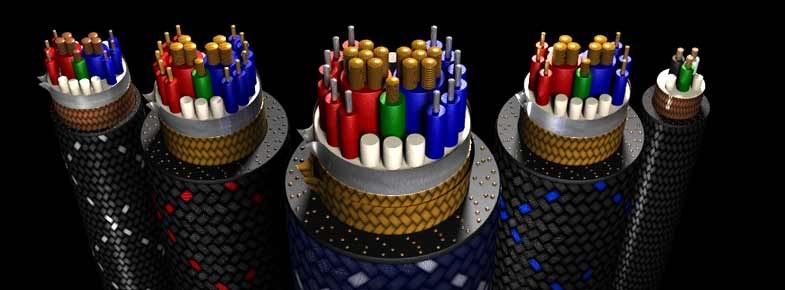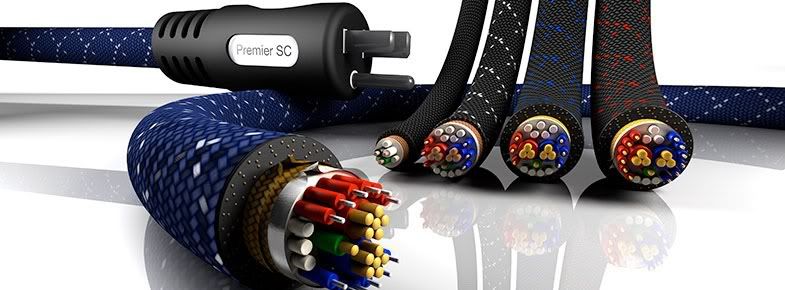Overview Of Premium Cable History
Comments
-
reeltrouble1 wrote: »for free a metorite can fall on his head pulverizing him to the earth leaving a toxic waste for the EPA to come in and dispose of.
A fitting and happy ending as well.
Such sledgehammer-ish remedies are wasted and totally unnecessary for an Internet troll. However, I do know a few lawyers I'd like to sign up for "treatment".:)
Who's keeping time for how long it takes for this one to go running to Polk management claiming he's being abused?Proud and loyal citizen of the Digital Domain and Solid State Country! -
I'm sorry for upsetting your flat earth society.
Ummm....you seem confused. The Flat Earth Society is a group of naysayers, like yourself.It is interesting and predictable how fire ants behave isn't it?
Yes it is. Fire ants are much like any human family or group of close friends in that they will stand together to defend one another from outside threats. Isn't nature great!?!Political Correctness'.........defined
"A doctrine fostered by a delusional, illogical minority and rabidly promoted by an unscrupulous mainstream media, which holds forth the proposition that it is entirely possible to pick up a t-u-r-d by the clean end."
President of Club Polk -
Fire ants are much like any human family or group of close friends in that they will stand together to defend one another from outside threats.
I don't want to talk about fire ants.
I want to talk about the apparent conflict of interest in John Dunlavy serving on an Audioholics cable naysayer panel in 2008 to beat up on poor old Pear Cable knowing all the while that he was peddling under performing, yet expensive, loudspeaker and interconnect cables as recently as 2002 (that's when DAL "folded up").
This makes me question the credibility and motivations of the other "esteemed" experts on that AH panel.
Your thoughts?Proud and loyal citizen of the Digital Domain and Solid State Country! -
Xcapri all I see are a bunch of others opinions (in all your Google searches).............so how is it your version of common sense (which is based on opinion) is any more correct than our (people who believe cables matter) version of common sense. My common sense tells me if I hear a difference in certain types of cables I should invest in those if the differences are positive and rewarding to my listening experience?
Apparently you haven't read or understood my SIG, please take the time to let that sink in.
H9"Appreciation of audio is a completely subjective human experience. Measurements can provide a measure of insight, but are no substitute for human judgment. Why are we looking to reduce a subjective experience to objective criteria anyway? The subtleties of music and audio reproduction are for those who appreciate it. Differentiation by numbers is for those who do not".--Nelson Pass Pass Labs XA25 | EE Avant Pre | EE Mini Max Supreme DAC | MIT Shotgun S1 | Puritan Audio PSM136 Pwr Condtioner & Classic PC's | Legend L600 | Roon Nucleus 1 w/LPS - Tubes add soul! -
Ummmm....H9.....did you see the part where he said none of his gear has detachable power cords?
Did you see the Audioholics reference?
Do you think he is here to add anything constructive to the discussion?Proud and loyal citizen of the Digital Domain and Solid State Country! -
^^ yes I did, but I was just trying to see if he could justify why his position is correct and the rest of our positions are wrong when all he has done is added his own as well as the other opinion references.
It's mainly rhetorical as I don;t think he will give a sufficient answer..............because he thinks his *opinion* is the only option and he has nothing constructive add. He won;t be taking his blinders off anytime soon...........or ever I suspect."Appreciation of audio is a completely subjective human experience. Measurements can provide a measure of insight, but are no substitute for human judgment. Why are we looking to reduce a subjective experience to objective criteria anyway? The subtleties of music and audio reproduction are for those who appreciate it. Differentiation by numbers is for those who do not".--Nelson Pass Pass Labs XA25 | EE Avant Pre | EE Mini Max Supreme DAC | MIT Shotgun S1 | Puritan Audio PSM136 Pwr Condtioner & Classic PC's | Legend L600 | Roon Nucleus 1 w/LPS - Tubes add soul! -
DarqueKnight wrote: »I don't want to talk about fire ants.
I want to talk about the apparent conflict of interest in John Dunlavy serving on an Audioholics cable naysayer panel in 2008 to beat up on poor old Pear Cable knowing all the while that he was peddling under performing, yet expensive, loudspeaker and interconnect cables as recently as 2002 (that's when DAL "folded up").
This makes me question the credibility and motivations of the other "esteemed" experts on that AH panel.
Your thoughts?
Yes, apparent conflict indeed. It would also seem to be a matter of sour grapes on Mr. Dunlavy's part. I wonder if fire ants had anything to do with that as they do like a good leafy plant. Political Correctness'.........defined
Political Correctness'.........defined
"A doctrine fostered by a delusional, illogical minority and rabidly promoted by an unscrupulous mainstream media, which holds forth the proposition that it is entirely possible to pick up a t-u-r-d by the clean end."
President of Club Polk -
I'm sorry for upsetting your flat earth society.
It is interesting and predictable how fire ants behave isn't it?
You copped the attitude with your 'Easter' post. You write a condescending post trying to belittle everyone and expect no recourse? 2 channel - Willsenton R8 tube integrated, Holo Audio Spring 3 KTE DAC, audio optimized NUC7i5, Windows 10 Pro/JRiver MC29/Fidelizer Plus 8.7 w/LPS and external SSD drive, PS Audio PerfectWave P3 regenerator, KEF R3 speakers, Rythmik F12SE subwoofer, Audioquest Diamond USB cable, Gabriel Gold IC's, Morrow Audio SP5 speaker cables. Computer - Windows 10/JRiver, Schiit Magni 3+/Modi 3+, Fostex PMO.4n monitors, Sennheiser HD600 headphones
2 channel - Willsenton R8 tube integrated, Holo Audio Spring 3 KTE DAC, audio optimized NUC7i5, Windows 10 Pro/JRiver MC29/Fidelizer Plus 8.7 w/LPS and external SSD drive, PS Audio PerfectWave P3 regenerator, KEF R3 speakers, Rythmik F12SE subwoofer, Audioquest Diamond USB cable, Gabriel Gold IC's, Morrow Audio SP5 speaker cables. Computer - Windows 10/JRiver, Schiit Magni 3+/Modi 3+, Fostex PMO.4n monitors, Sennheiser HD600 headphones -
I just wish everyone could enjoy what they have and not have a conniption fit and assemble an "expert" panel to bash other people's entertainment devices.
I mean, really, I don't think any of us would go to a crack den and give a lecture on the evils of drug abuse would we?
By the way, this is somewhat off topic, but I just wanted you to know that I have ordered four Isoclean audio grade 1 Amp 5x20mm slow blow fuses to replace the two rail fuses in each of my JC 1 mono blocks. I replaced the JC 1's 12 Amp power line fuses a while ago and liked the improvement.
I also ordered HiFi Tuning audio grade 0.5 Amp slow blow 6.3x32mm power line fuses for my Pass Labs line level and phono preamps. I would have preferred to have ordered Isoclean fuses for the Pass gear, but they don't make a 0.5 Amp 6.3x32mm fuse. The consensus of those who have tried both the Isoclean and the HiFi Tuning fuses is that the Isocleans are more....um...clean. One of our members up in Canada tried the HiFi Tuning fuses in some appropriate gear and really liked them.
Review forthcoming.Proud and loyal citizen of the Digital Domain and Solid State Country! -
dragon1952 wrote: »You copped the attitude with your 'Easter' post. You write a condescending post trying to belittle everyone and expect no recourse?

Well, true to form, weren't the condescension and insults expected? Isn't what Confucious said over 2000 years ago still true today?DarqueKnight wrote: »"Abuse is the last refuge of the outwitted."
- Confucious
Anyway, if we can leave the trolls under the mushrooms and get back to cables...aren't these works of art?
Figure 1. PS Audio power cable internal arrangement.
Figure 2. PS Audio power cable internal arrangement.
I have one of the red ones (copper only) and five of the blue ones (copper/silver). I use the red one behind my AC regenerator. A thicker and more expensive blue cable didn't sound any better than a red cable in that location.
Such Good Sound.Proud and loyal citizen of the Digital Domain and Solid State Country! -
DarqueKnight wrote: »...aren't these works of art?
QUOTE]
They sure arrre perrtty. Niiicer look'n than new tars on a fancy car!
Seriously, how is strain relief provided for a retrofit like this? Just add a cable tie or something? I didn't look in the back of my amp, but most mfgr installed power cables provide a degree of strain relief by having a nipple like arraingement built into the end of the cable that mates with the backplate of the device. -
Those connectors are 3" long and provide a measure of strain relief. After that, you're on your own. You also need 6" of clearance behind the audio component for a 90 degree bend.Proud and loyal citizen of the Digital Domain and Solid State Country!
-
I have found that snug connections are a must. With the heavy construction, it often advisable , IMHO, to allow for a little more room and provide some sort of horizontal support. YMMV
-
Locked until further notice....good job guys, way to be adults.CTC BBQ Amplifier, Sonic Frontiers Line3 Pre-Amplifier and Wadia 581 SACD player. Speakers? Always changing but for now, Mission Argonauts I picked up for $50 bucks, mint.
This discussion has been closed.




